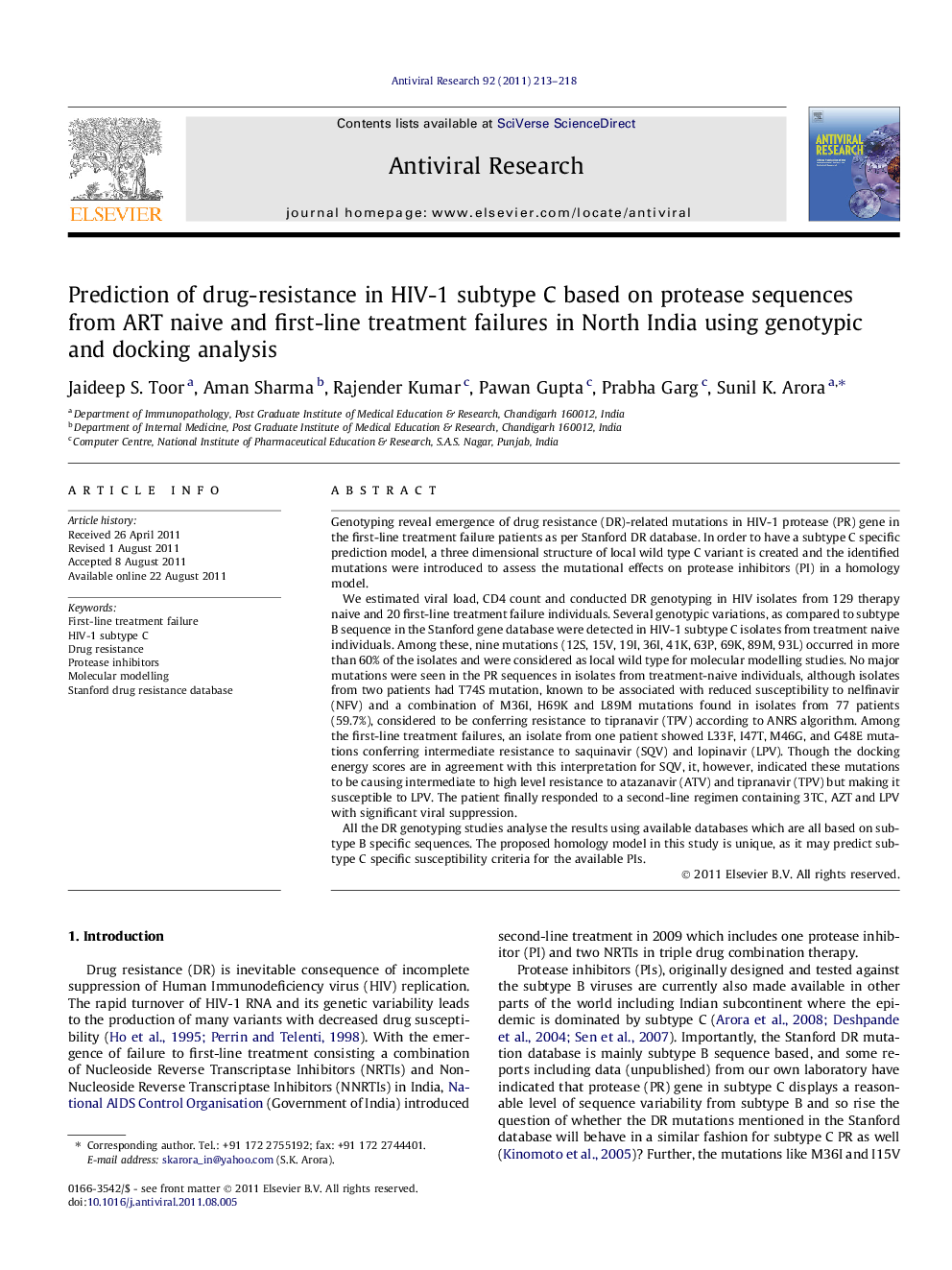| کد مقاله | کد نشریه | سال انتشار | مقاله انگلیسی | نسخه تمام متن |
|---|---|---|---|---|
| 2510217 | 1117960 | 2011 | 6 صفحه PDF | دانلود رایگان |

Genotyping reveal emergence of drug resistance (DR)-related mutations in HIV-1 protease (PR) gene in the first-line treatment failure patients as per Stanford DR database. In order to have a subtype C specific prediction model, a three dimensional structure of local wild type C variant is created and the identified mutations were introduced to assess the mutational effects on protease inhibitors (PI) in a homology model.We estimated viral load, CD4 count and conducted DR genotyping in HIV isolates from 129 therapy naive and 20 first-line treatment failure individuals. Several genotypic variations, as compared to subtype B sequence in the Stanford gene database were detected in HIV-1 subtype C isolates from treatment naive individuals. Among these, nine mutations (12S, 15V, 19I, 36I, 41K, 63P, 69K, 89M, 93L) occurred in more than 60% of the isolates and were considered as local wild type for molecular modelling studies. No major mutations were seen in the PR sequences in isolates from treatment-naive individuals, although isolates from two patients had T74S mutation, known to be associated with reduced susceptibility to nelfinavir (NFV) and a combination of M36I, H69K and L89M mutations found in isolates from 77 patients (59.7%), considered to be conferring resistance to tipranavir (TPV) according to ANRS algorithm. Among the first-line treatment failures, an isolate from one patient showed L33F, I47T, M46G, and G48E mutations conferring intermediate resistance to saquinavir (SQV) and lopinavir (LPV). Though the docking energy scores are in agreement with this interpretation for SQV, it, however, indicated these mutations to be causing intermediate to high level resistance to atazanavir (ATV) and tipranavir (TPV) but making it susceptible to LPV. The patient finally responded to a second-line regimen containing 3TC, AZT and LPV with significant viral suppression.All the DR genotyping studies analyse the results using available databases which are all based on subtype B specific sequences. The proposed homology model in this study is unique, as it may predict subtype C specific susceptibility criteria for the available PIs.
► DR genotyping of HIV isolates from therapy-naive and treatment-failures conducted.
► Docking of various PI drugs attempted on computational model of HIV subtype C protease.
► Binding energies calculated after introducing detected mutations.
► A prediction model proposed for calculating the susceptibility levels for each drug.
► The model is based on HIV subtype C protease sequences for screening of PI drugs.
Journal: Antiviral Research - Volume 92, Issue 2, November 2011, Pages 213–218